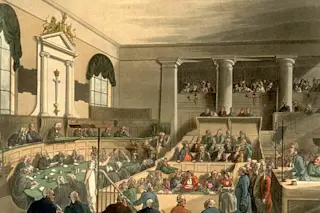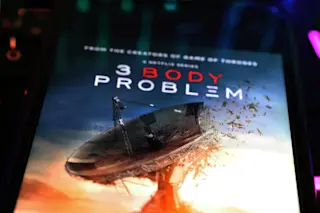An Old Bailey trial, circa 1808. (Credit: Thomas Rowlandson/Bridgeman) Author E.M. Forster is purported to have written, "How do I know what I think until I see what I say?" The same principle has now been applied to understand what society thought about violence hundreds of years ago – by seeing what they said in the courtroom. Scientists performed a linguistic analysis of digitized trial transcripts from the Old Bailey, London’s oldest criminal court, to reveal society’s stricter attitudes toward violence between 1760 and 1913. Their study presents the first hard data on the emergence of societal norms and bureaucratic systems meant to control violent behavior.
There was a time when violent and nonviolent crimes – armed assault versus petty theft, for instance – were essentially treated the same in London courts. But around the emergence of the Victorian era, society grew far less tolerant of violence, and the proof ...














